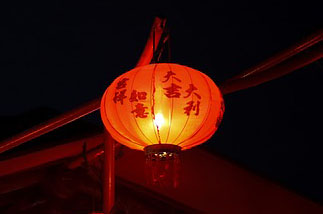
China has suffered serious air pollution, mainly produced by coal burning and exhaust emissions, for more than ten years. Initially, air pollution occurred in northern areas including Beijing. Not too soon, the polluted air spread over the whole country. From time to time, hundreds of millions of Chinese have to live in the worst air in the world.
Since 2008, it has become a typical practice for authorities in Beijing to order highly polluting businesses and industrial plants in the surrounding areas to close for days or weeks in order to improve local air quality, whenever there is a nationally or internationally important event, such as Olympics 2008 and APEC China 2014, hosted in Beijing.
In response to the worsening air pollution and frequently heavy smog, a multi-level warning system has been implemented since 2013 in order to warn residents how bad the air is. In 2015, Beijing announced its first-ever red alert for heavy smog, the highest of the four-tier system, for four days. Since then, both red and orange (second) alerts have been issued several times annually in multiple cities.
Generally, a red alert (Air Quality Index higher than 450) orders factories, schools and construction sites closed and ban half of all vehicles from streets, while an orange alert (Air Quality Index higher than 400) requires highly polluting businesses (e.g., factories that make furniture and cement) to limit their output to 50% from 80%.
There is no doubt that these measures are effective, to some extent, in mitigating air pollution. However, a question remains unclear, which may be interesting and may not be ignored. That is, how about air quality over China in winter when most, if not all, of highly polluting businesses in the country are closed? The answer to this question would provide information about the contribution of energy consumption in winter for heating to air pollution in China. The chance that this condition is met is only in the Chinese New Year holidays.

Chinese Lunar New Year, also known as Spring Festival, is one of the world’s most prominent and celebrated festivals. It is a major holiday in Greater China. Many people and revelers, particularly youths and children, traditionally celebrate with several nights of fireworks. In 2018, the Chinese New Year started on February 16 and the public holidays in China started from February 16 to 22, with a total of seven days. During these days, all construction sites and all factories except power plants and steel plants were closed.
In this post, several screenshots of the Real-Time Map of Air Pollution were present to demonstrate the air quality in China during the New Year holidays. Overall, air pollution was improved to some extent in most areas, but still at moderate to heavy levels (PM 2.5 density lower than 300 mg/m3) during the holidays except the New Year’s Day (February 16), on which the air pollution was complicated with fireworks smoke. Notably, the areas with severe levels of air pollution (PM 2.5 density higher than 300 mg/m3) became limited during the holidays. These findings suggested that the closure of polluting factories and construction sites may be effective in mitigating air pollution but only enough yet.
Given that most of the highly polluting businesses in China were closed during the holidays, the air pollutant emissions mainly came from energy consumption for daily life including coal burning for household heating. In recent year, one of the major plans or measures against air pollution in China is the switching of energy sources for households heating to natural gas from coal. If this ambitious program could be implemented successfully, the air quality would be better during the New Year Holidays.
Several months ago, the program to convert large numbers of coal-fired boilers to natural gas had to be halted in early winter in northern China due to supply shortages that left numerous homes without heat. Given the population size and huge demand in China, the coal-to-gas switching policy may not be sustainable in a long run. How to effectively control air pollution remains a great challenge for Chinese authorities. Other measures, e.g., mobilizing household heating system to reduce heating space and shorten heating time, should also be considered as alternative and complementary ways.


Leave a Reply